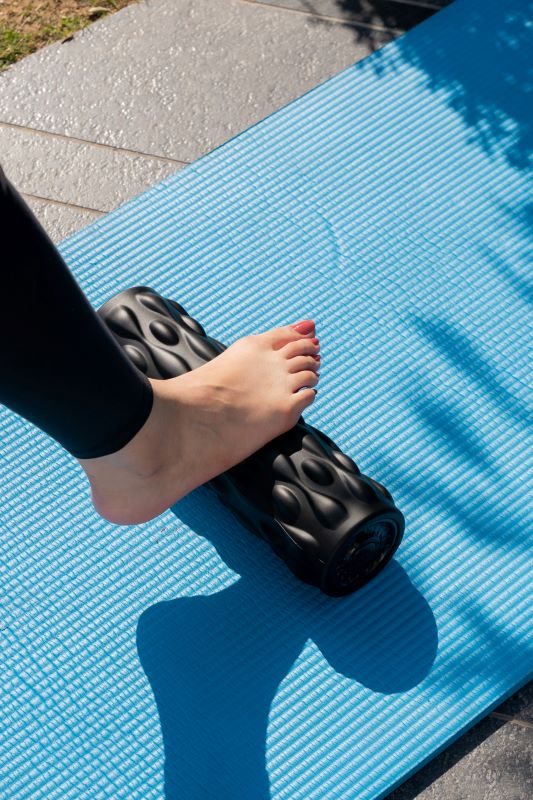News
Anti-Tear & Wear-Resistant Yoga Mats for Intense Workouts
Anti-Tear and Wear-Resistant Design: Solutions for Intense Yoga Workouts
Yoga has evolved from a gentle practice to a rigorous workout. Advanced poses demand mats that endure extreme pressure. Rubber yoga mats offer a unique combination of durability, flexibility, and stability. Their anti-tear and wear-resistant properties ensure longevity even under intense routines.
Understanding High-Intensity Yoga Demands
High-intensity yoga poses stress both the body and the mat. Balancing, twisting, and dynamic transitions apply significant force. Ordinary mats may tear or wear unevenly, reducing safety. Mats engineered for durability resist stretching and surface abrasion, supporting every posture with stability. Moreover, a reliable mat prevents slippage, minimizing injuries during complex flows.
Materials That Enhance Durability
Premium rubber forms the backbone of anti-tear yoga mats. Natural and synthetic blends provide elasticity while maintaining tensile strength. Rubber molecules interlock tightly, resisting punctures and tears. This structure also absorbs impact, protecting joints during jumps or lunges. Additionally, the surface texture complements wear resistance, ensuring a consistent grip over prolonged usage.

Surface Design for Wear Resistance
Surface design plays a crucial role in longevity. Textured rubber prevents sliding without excessive friction. Patterns disperse stress across the mat, reducing localized wear. Furthermore, dual-layer constructions enhance durability. The top layer provides traction, while the bottom supports stability and prevents mat deformation. Together, they extend the mat’s usable life significantly.
Tear Resistance Mechanisms
Tear resistance is achieved through precise material engineering. Rubber mats undergo cross-linking processes that strengthen molecular bonds. Reinforced edges reduce fraying, a common failure point in intense practice. Moreover, advanced laminating techniques integrate layers seamlessly. This approach minimizes weak points and improves resilience under repeated stretching and folding.
Impact of Thickness and Density
Thickness and density directly affect tear and wear resistance. Thicker mats absorb pressure better, preventing material breakdown. Optimal density balances cushioning and stability. Mats that are too soft risk tearing; mats that are too hard compromise comfort. Carefully calibrated thickness ensures durability while maintaining responsiveness to every pose.
Grip and Anti-Slip Performance
Grip is essential for high-intensity practice. Mats must maintain traction even with sweat. Rubber surfaces provide natural adhesion, preventing sliding. Micro-patterned textures enhance friction, particularly during arm balances or standing inversions. Wear-resistant surfaces retain grip over time, ensuring consistent performance without surface degradation.
Longevity Under Frequent Use
Durability is tested by frequent use in home or studio settings. Anti-tear yoga mats withstand daily stretching, folding, and cleaning routines. High-quality rubber resists chemical damage from sweat, detergents, or disinfectants. This resilience ensures the mat maintains structural integrity and visual appeal over extended periods, making it a reliable long-term investment.
Environmental Considerations
Many durable rubber mats also emphasize eco-friendliness. Natural rubber sources reduce synthetic additives, lowering environmental impact. Non-toxic materials maintain performance without compromising user health. Additionally, recyclable or biodegradable options align with sustainability trends, offering both durability and environmental responsibility.
Maintenance for Maximum Durability
Proper maintenance extends the lifespan of rubber yoga mats. Regular cleaning with mild solutions removes sweat and dirt that may weaken fibers. Rolling instead of folding prevents creases and material fatigue. Storage in a dry, cool environment maintains elasticity. Together, these practices preserve anti-tear and wear-resistant properties, ensuring long-term performance.
Choosing the Right Anti-Tear Yoga Mat
Selecting an appropriate mat requires evaluating material, thickness, texture, and density. High-intensity practitioners should prioritize tear resistance and wear durability. Testing surface grip under dynamic movements ensures stability. Additionally, considering environmental impact and ease of maintenance contributes to overall satisfaction. Investing in a premium mat enhances safety, comfort, and performance.
Conclusion
Anti-tear and wear-resistant yoga mats provide essential support for high-intensity routines. By integrating superior materials, advanced surface design, and reinforced construction, these mats endure rigorous practice while offering stability and grip. Thoughtful selection and proper care maximize lifespan, ensuring that each session remains safe, comfortable, and effective. For dedicated practitioners, durable rubber mats represent both a practical solution and a long-term investment in performance.
Categories
News
Contact Us
Contact: Dongguan Fulida Rubber Products Co., Ltd
Tel: +86 0752-6806686
E-mail: fay@fulidarubber.com